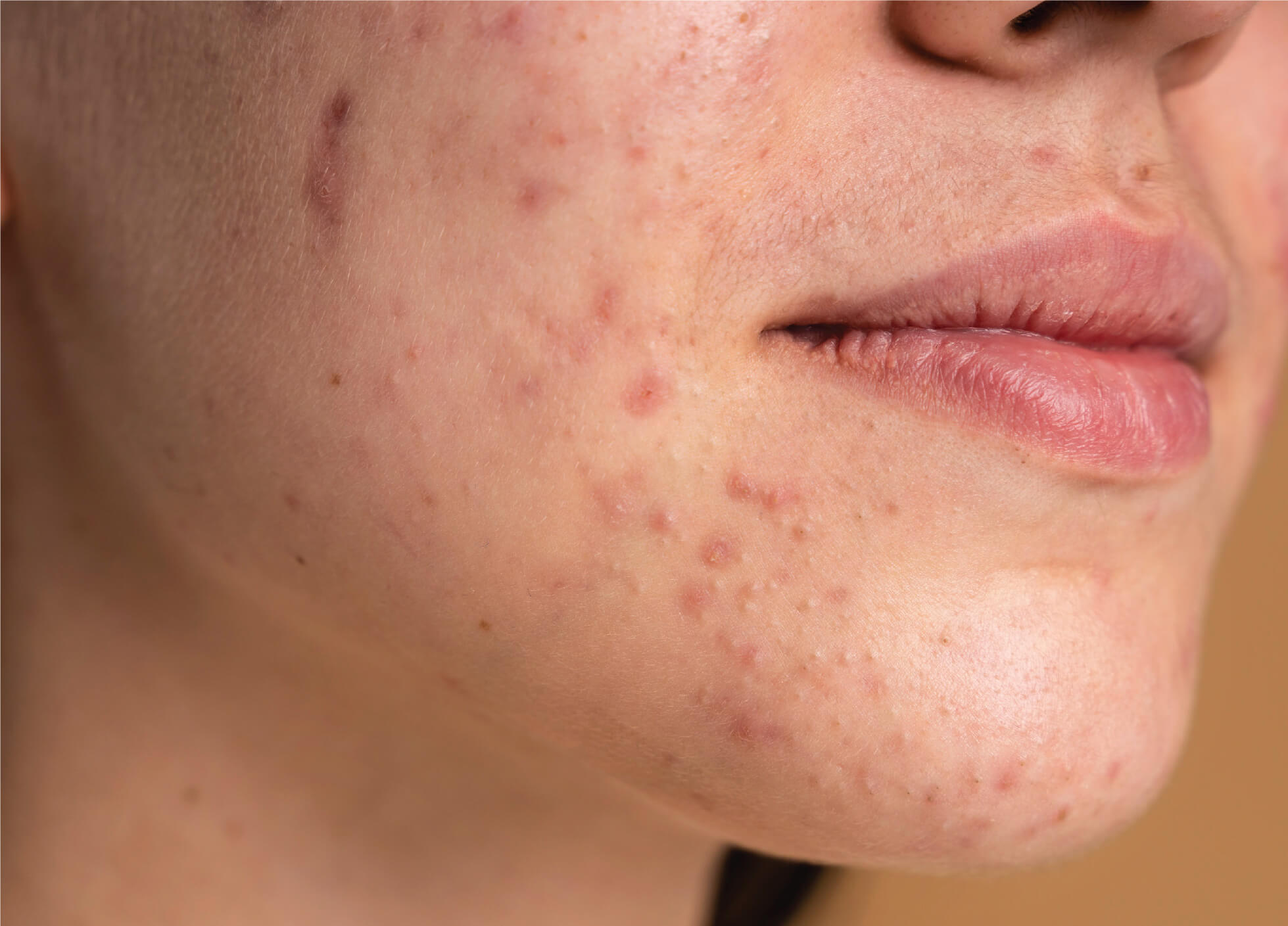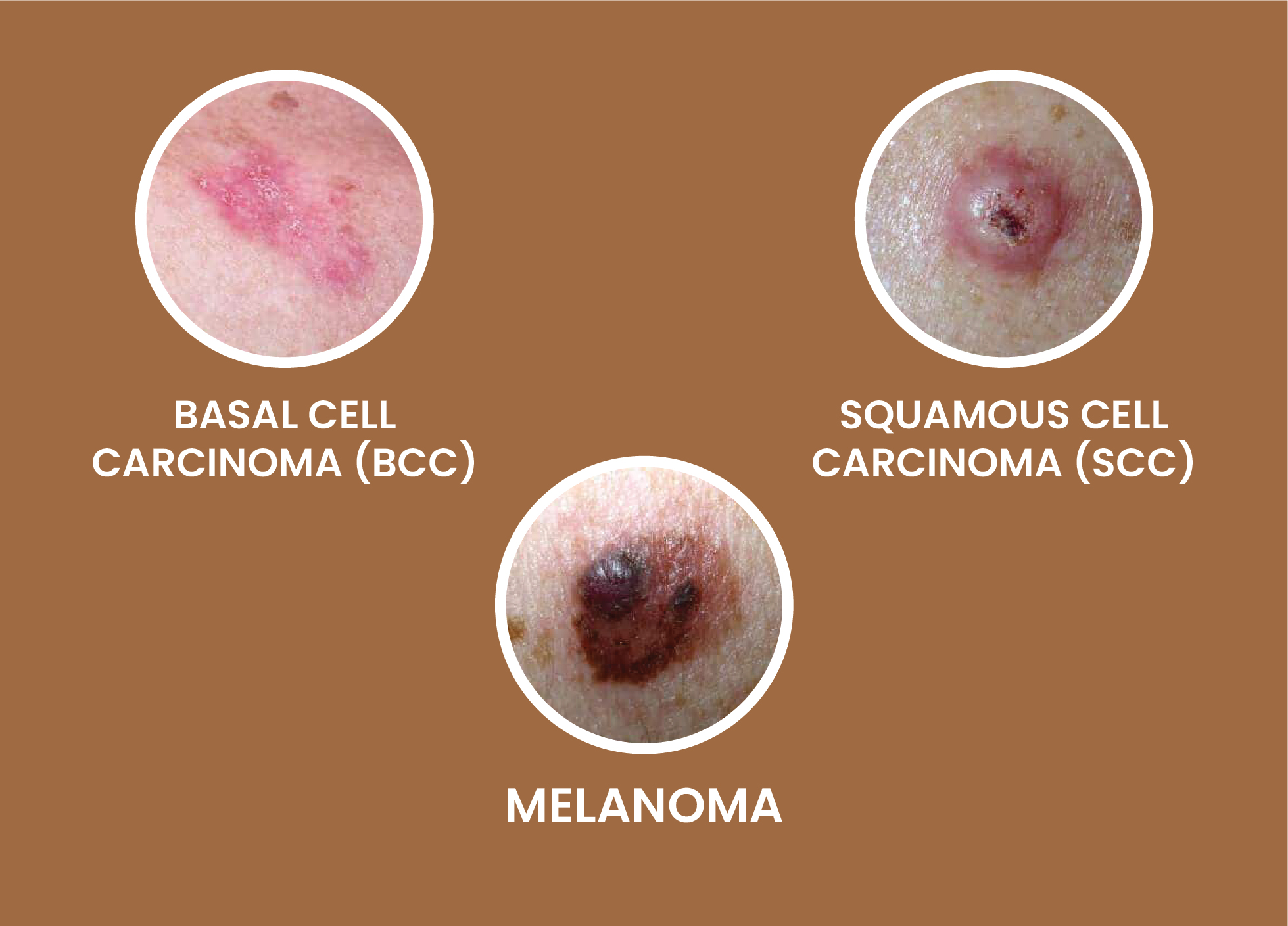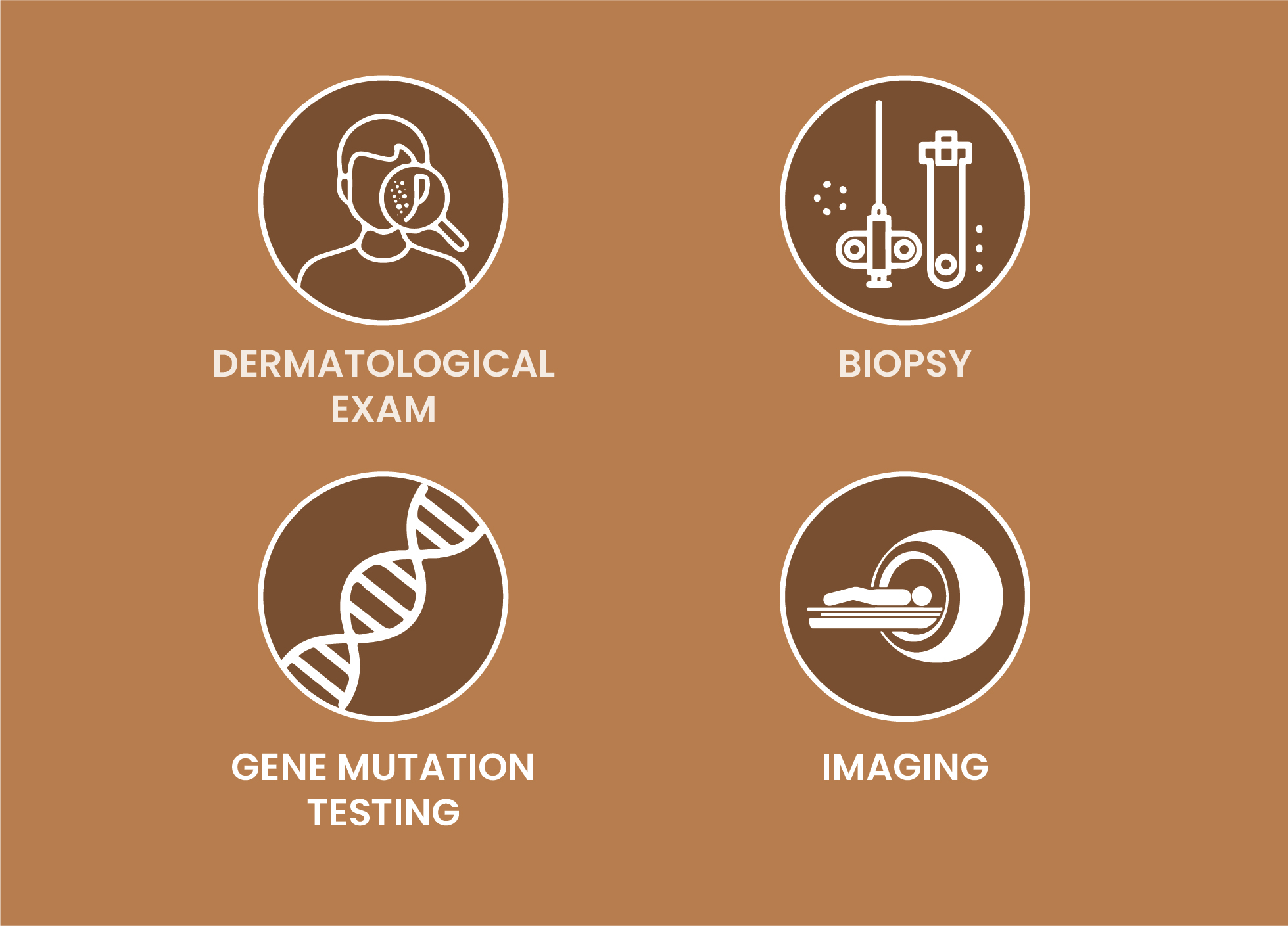Skin Cancer
Introduction
The incidence of skin cancer in India is much lower than in other parts of the world. The researchers found India to have a low incidence of melanoma.
Skin cancer is the abnormal growth of skin cells and is the most common type of cancer around the world. While skin cancer usually forms on sections of the skin exposed to direct sunlight, it can also grow on other parts of the body that don't often see the sun's harmful ultraviolet rays.

Types of Skin Cancer
There are three main types of skin cancer-

There are four main types of skin melanoma:
Causes
The majority of skin cancer is caused by overexposure to ultraviolet (UV) radiation from the sun and artificial sources such as solariums. UV radiation is strong enough to damage skin cells and cause skin cancer.
Risk factor
Factors that may increase the risk of skin cancer include:


Signs & Symptoms
A change in skin is the most common sign of skin cancer. This could be new growth, a sore that doesn't heal, or a change in a mole. Not all skin cancers look the same.
For melanoma specifically, a simple way to remember the warning signs is to remember the A-B-C-D-Es of melanoma—
Diagnosis
If a doctor finds an abnormality on skin that might be skin cancer, the doctor may perform one or more of the following tests:

A few of the gene mutations that may be present in melanoma and that can be detected in a blood sample, include:
Management
A recommended treatment plan will depend on different factors, like the size, location, type, and stage of your skin cancer. After considering these factors, your healthcare team may recommend one or more of the following treatments:
Follow-Up
Follow-up visits for melanoma skin cancer are usually scheduled every 3 to 12 months. It depends on the stage and risk that cancer will come back. If you were treated for an advanced stage of melanoma skin cancer or have a high risk of recurrence, follow-up is usually done more often for the first 2 to 3 years.
